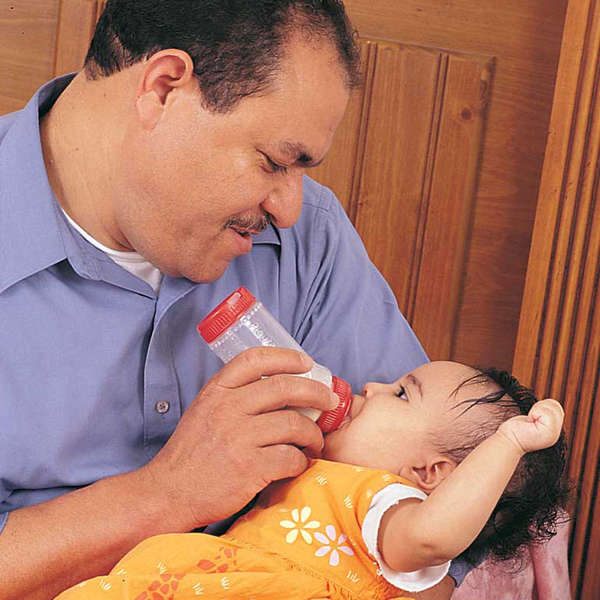All new parents have questions about feeding. For adoptive parents there is more to consider than just nutrition. Feeding is a powerful way to demonstrate to a child that you love her and will always take care of her. Here are answers to some common concerns about food.
Should I try to breastfeed?
If you are adopting a newborn, your choices will be the same as most parents’. While breast milk is ideal, babies can thrive both emotionally and physically on standard formula and bottles. Any brand is fine as long as it contains iron. Adoptive mothers can breastfeed, although the actual nutrition comes primarily from formula. Talk with your child’s pediatrician or a lactation consultant to decide if this option is right for you.
How can I help my older baby’s transition?
If the baby refuses a new formula, mix it with the one she’s used to and gradually introduce the new one. Infants older than four to six months can start with strained foods. Add one new food at a time.
Many children who lived in orphanages will eat huge amounts of food for the first weeks or months after adoption. This comes from physical malnutrition and from learning to eat as much as possible when food is available. It is very important to allow your child to eat as much as she desires, as often as she desires. She needs to catch up physically and — more importantly — to learn that you will provide what she needs, not restrict it.
For long-term healthy eating habits, she needs to learn to regulate her own intake after she’s full. She’ll learn to stop eating once she trusts that there will always be food when she needs it.
Why does my baby seem to have an aversion to baby food?
Some children may not know what to do with food placed in their mouths. Many orphanage children are fed through propped bottles, and some develop oral motor dysfunction. This means that the muscles for sucking, chewing, or swallowing are not highly developed. This is best remedied early, and with the help of an experienced pediatric feeding therapist.
Talk to your child’s pediatrician or your local early intervention service to find a trained feeding therapist in your area. Children may also need practice before they can drink from a bottle or sippy cup. It is best to use bottles with small holes and sippy cups without valves. Most children will quickly get the hang of it.
My baby doesn’t want me to hold her close when I feed her. Why is this?
Orphanage caretakers rarely hold babies to feed them, so some infants are accustomed to arching their backs in order to suck down the milk. As you feed your child in your arms, gradually flex his arms and legs inward. Your child will feel more secure and will relax as you maintain eye and body contact while feeding. Feeding your child while holding her in your arms can be a very powerful way to nurture your child’s growing attachment. Positive experiences around feeding can go a long way toward developing strong and permanent attachments.



